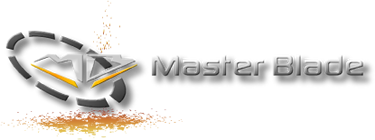What is a Diamond Blade?
A diamond blade is a cutting tool which consists of a steel core with diamond tipped segments. They can range from segmented diamond blades, continuous rim, turbo, turbo segmented, electroplated amongst others used in different industries.
The steel core may have several gullets (spaces between segments) depending on the usage of the blade. These gullets allow a cooling process in which air and water can circulate between the segments. The gullets also assist in removing some of the left behind materials, or slurry, from the cut.
Another part which affects the cost of a diamond blade is the type of welding being used which can vary from sintered, laser welded, silver brazed and more.
How do Diamond Blades cut?
Knowing how a diamond blade cuts can play a very important role in lowering your cost per foot. The basic principle of diamond blades is using the correct bond for the specific material being cut.
The segments which retain the diamond crystals are usually composed of metallic powders with a certain wear rate based on the material it is designed to cut. This is also referred to as the bond.
If you were going to be cutting cured concrete then you would need a soft bond so that the segments can wear down fast enough to release the used diamonds and expose new crystals to continue cutting fast and efficient.
If you were going to cut fresh concrete or asphalt then you would want to use a hard bond which is more resistant to the abrasive properties of the material being cut. This way the segments won't wear down prematurely and potentially waste your blade.
Sometimes you run into situations where both hard and abrasive materials are present. An example of this would be a layer of asphalt over a layer of concrete. Some people think a concrete or asphalt blade would be enough to cut both materials but in reality it could result in damaging your blade, equipment, staff and wallet.
Concrete blades do not typically have undercut protection and the bond would wear down extremely fast through the asphalt reducing the blade life and wasting your hard earned money.
Asphalt blades have a hard bond meaning the wear rate is a lot slower to be able to resist premature wear when cutting soft abrasive materials. Therefore, when introduced to the concrete the segments will not wear down fast enough to continue cutting efficiently and as a result the blade will begin pounding on the concrete instead of cutting. This can not only cause damage to your equipment, but also potentially fracture the blade resulting in injury.
In this specific scenario you could do one of two things. You could buy two separate blades to handle each layer, or you could buy a specialized "Asphalt over Concrete" blade which consists of a medium hard bond and special drop segments to prevent premature wear and undercutting.
Deciding which route to take all depends on the job you are doing and the equipment you have to work with. Using one blade can be beneficial when taking on smaller jobs that won't require many blades to complete. It also can save time by not having to switch blades out. When dealing with the larger jobs where you may have access to more equipment, you want to focus more on cost per cut to save yourself money which will be easier to obtain with two separate blades.
Matching the bond to the correct material is the key to efficient and safe cutting. Once you are familiarized with the basics it's time to choose which tool is best suited for your specific cutting needs.
View our recommendations for choosing your diamond blade:
Selecting Blades
Copyright © 2012 Masterblade USA | All Rights Reserved



